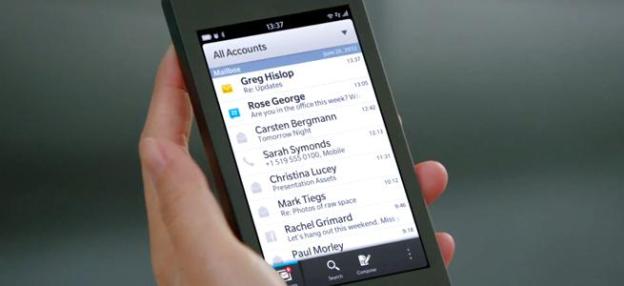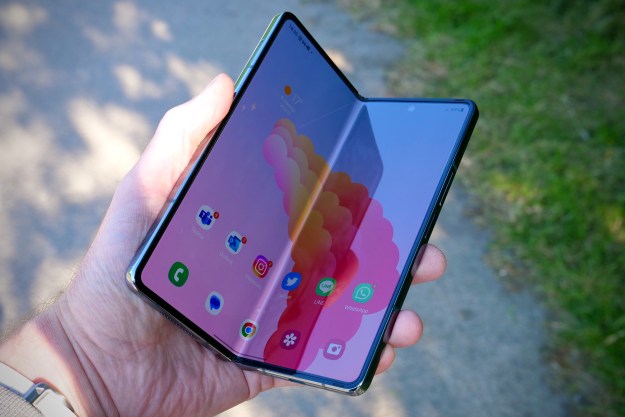
For the first time in several years, 2013 looks set to play host to the launch of numerous compelling new mobile operating systems, at least one of which could have a chance of stealing some market share from the reigning champions Android and iOS. Of course, neither of these will be sweating just yet, but we expect some droplets to be forming on a few foreheads at Microsoft.
By our reckoning, there are five interesting challengers expected to appear over the next 12-months, so ahead of CES 2013 – where several will be demonstrated to developers and the public – here’s a rundown of the software that could be vying for your attention on a flashy new smartphone come CES 2014.
BlackBerry 10
By far the biggest name on our list, BlackBerry 10 is also backed by the company with the most to lose. Like Nokia last year, Research in Motion badly needs a winner, otherwise its future looks very uncertain indeed. Worse still, even if BlackBerry 10 does meet with a decent response, things will remain shaky for RIM for a while, just like they have for Nokia.
Thanks to some strategic leaks and a few informative presentations, we know quite a lot about BlackBerry 10 and the phones on which it will launch. We even have an exact date when it will arrive, January 30, plus the knowledge it’ll be available about a month afterward on two phones, one with a touchscreen and the other with a QWERTY keyboard.

As for the software, it has a new web browser and an improved touchscreen keyboard, plus an innovative camera feature named Time Shift, where a burst mode lets to manually change individual expressions to make the perfect photo.
There’s a lot of goodwill toward RIM, and BlackBerry phones have a solid following around the world, but any level of reinvention is always a risk – the specter of Palm and WebOS probably roams the hallways of RIM’s headquarters, as an ever present reminder that even an innovative product isn’t always enough to succeed.
Ubuntu for Mobile
Ubuntu may be a familiar name in Linux-loving desktop software circles, but it’s an unknown in the mobile world. This hasn’t stopped Canonical from giving it a go anyway. Later this year or early next, we’ll be able to buy a smartphone running Ubuntu for Mobile.
Ubuntu is based on Linux like Android, uses the same drivers, and will operate on devices using ARM or Intel processors. Unfortunately, it doesn’t use Oracle’s Java Virtual Machine and won’t run any Android applications. This clean slate, plus a consistent framework hidden under a customizable skin, is supposed to avoid the fragmentation issues from which Android suffers. It’s a good idea, and no doubt Canonical sees Android’s success as a driver for its own mobile endeavors, but to start afresh is a huge undertaking – as is convincing non-techy users it’s a viable alternative at all. Ubuntu for Mobile does have a secret weapon though: it can be installed on existing Android hardware. The already strong Ubuntu community will also rush to embrace it, particularly because it offers a true desktop experience when docked with a keyboard and monitor.
From what we’ve seen of the user interface, it’s based around gestures and doesn’t require any hardware buttons. Swipes reveal menus and open apps. It’s difficult to judge it at the moment, as the early build displays some lag; however, a version suitable for the Galaxy Nexus will be released later this year, which should help speed development along. Canonical will be showing off Ubuntu for Mobile during CES, where an early version of the OS will be seen running on test devices.
Firefox OS
Research in Motion has Android, Windows Phone, and iOS firmly in its sights, but Mozilla is targeting the budget sector with its Firefox OS, therefore gunning almost exclusively for cheap Android phones. Previously known as Boot to Gecko, Firefox OS is ready to launch in several countries in early 2013, plus Mozilla has signed up hardware manufacturers such as ZTE and Alcatel as partners. Telefonica, the Spanish mobile giant which has an extensive presence around the world, is onboard, and in the U.S., Sprint will apparently support the software.
Telefonica’s backing is key, as the first Firefox OS phone is set to make its debut in Brazil and other Latin American countries, where the company owns many fixed and mobile communication networks. Hardware running the software will be low spec and probably cost less than $100, so strong promotion though companies like Telefonica in new and developing markets will be crucial to its success.
Internally, Firefox OS is similar to Android, but it won’t be able to run Android apps and will instead rely on Web apps available through Mozilla’s own app store. Firefox itself is high web app-centric, designed and built using HTML5. You can read our hands-on report here, or even try out Firefox OS yourself using this browser extension.
Jolla
Jolla is the Finnish firm hoping to bring back MeeGo, the mobile OS abandoned by Nokia when it adopted Windows Phone, and is the true dark horse in our line-up. The Sailfish UI was unveiled at an event in November, and although our introduction was brief it did show promise. MeeGo’s spirit lives on in the shape of gesture controls and a smart, simple interface, plus there’s no denying the energy and enthusiasm the Jolla team has for the project.
What’s more, a little like BlackBerry 10, Jolla already has an established fan base thanks to the international support for MeeGo and its single phone, the Nokia N9. Jolla is counting on each and everyone of them, plus those unable to purchase an N9, to flock to the first Sailfish phone. If Jolla and Saifish where a movie, it would have “cult hit” written all over it. It would also be an indie flick; it’s the only OS on our list which doesn’t have a few large companies behind it, which could mean financial concerns further down the road.
Jolla will initially look outside of Europe and the U.S., concentrating first on China for business, where it will also base its servers. It has said the first Jolla smartphone will be announced before the end of March and released before summer. While it doesn’t have an official presence at CES 2013, according to the company’s Twitter account, some representatives – amusingly referred to as Sailors – will be there to promote the intriguing OS.
 Tizen
Tizen
Here’s were things get a little incestuous, as Tizen is a joint project between Intel and Samsung and it came to life after the cancellation of MeeGo, from which, as we’ve just learned, Jolla was formed. Additionally, Samsung has merged Tizen with its own standalone mobile OS Bada, which is helpfully based on Linux and is compatible with Tizen. It’s linked to Firefox OS too, as its apps will be built using HTML5 and will be compatible with Mozilla’s operating system, and vice versa.
Although there was plenty of big talk from Samsung at the beginning of 2012 regarding an impending smartphone release, nothing more was said until last week, when Samsung piped up again, saying that Tizen phones would be out this year instead.
Tizen’s trump card may appear to be Samsung’s support, but in reality it could be Intel, as its desperation to gain a foothold in the mobile processor market should see plenty of money and effort put into Tizen’s success. (Although the software is compatible with ARM-based devices, you can bet Intel will be pushing Samsung to choose its Atom processors.)
Samsung’s plan is rumored to be equally selfish, as it’s said to be looking for an alternative to Android should Google and Motorola suddenly start churning out exciting phones together. Bada is surprisingly successful, with Gartner putting it fourth in its worldwide device sales chart for Q3 2012 and ahead of Windows Phone, meaning Tizen could have quite a head start over the others listed above. Version 2.0 of Tizen is expected to launch soon and it could be on display at CES, heralding the arrival of the first Tizen phones.
Can any of these succeed?
When talking about fledgling mobile operating systems, the question, “do we really need another smartphone OS?” is often asked. It’s a fair question, as the three we currently use are well-designed, relatively bug-free, regularly updated, and have ever-growing app eco-systems behind them. Therefore, given this huge head start and the financial might behind Android, iOS, and Windows Phone, perhaps a more pertinent question is, “how can any of these succeed?” They will need perseverance, support from developers and networks, dedicated fanbases, and some stellar and/or keenly priced and widely available hardware. Not all of them will make it, but one or two may do some damage. What OS would you put your money on?





